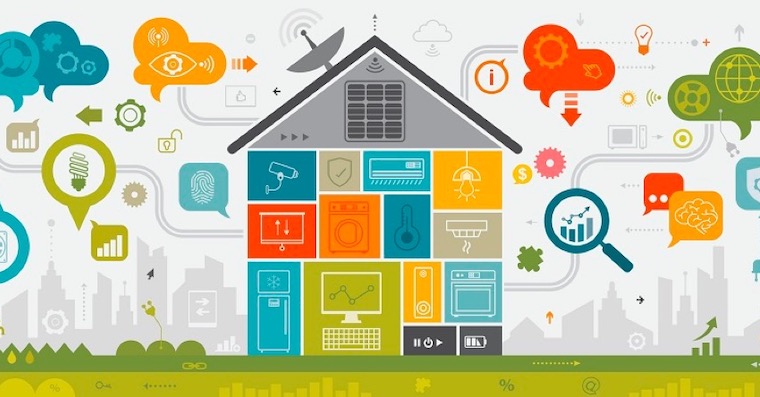Commercial message: The latest trend in the world of technology is home control and monitoring systems that do not require complex installation. Many manufacturers offer them, which is why mutual compatibility sometimes falters. How to choose the right device for smart home, so that it works for you without problems and saves time as a result?

Central units vs. Apple HomeKit
A home control system usually consists of sensors and a control unit that connects and controls everything. The connection can be provided by your home network (WiFi, Ethernet) or a special wireless network. In practice, the standard is most often used Z-Wave a Zigbee, operating in Europe in the license-free frequency band of 868,42 MHz.
He goes against the flow Apple HomeKit, which does not need a central unit. The transmission of information thus works on the basis of direct communication between the sensor and the device Apple. Such sensors (or various accessories) must be certified Works with Apple Home Kit.
Smart technologies are knocking on the door
And literally. You can buy it today smart locks to your front door. The smart lock will then automatically unlock when the paired phone is brought close. However, the more expensive variants can also be unlocked based on your fingerprint.
When you get through the front door, you definitely need to turn on the lights first. They play the main role here smart light bulbs, which can create effects for special occasions. In the morning, it wakes you up at the set time by slowly turning on the light and thoroughly illuminates the worktop while cooking. During a romantic dinner, dimmed lighting will make the atmosphere special. It's just a step away smart sockets, which, in addition to remote operation control, also enable the consumption of connected devices to be determined.
They can make heating more efficient and prevent waste smart thermostats, which gradually learns your habits and favorite temperature settings in individual rooms. The temperature can also be automated with, for example, smart weather stations.
Smart security is already enjoying enormous popularity. And it's no wonder - you get round-the-clock surveillance of your household through your smartphone. There are not only security cameras with motion sensors, but also smoke and water leak detectors.

What about voice assistants?
The user of the products can create a smart home Apple simply control using the Home app, or even better with Siri voice commands. For example, it's enough Apple HomePod set as a home center that will perform the desired actions whenever you want.
Siri knows what HomeKit-enabled accessories you have set up in the Home app and monitors their status. So just say "Hey Siri" and then, for example, "Turn on the lights" and you have a single command to light up the whole apartment.

Of course, Siri isn't the only one voice assistant. For example, Alexa from Amazon's workshop or Google Assistant are also available. Currently, unfortunately, no assistant supports Czech, but according to the latest reports, they should learn our language this year or next year.
Apple HomeKit and scenario building
A full range of supporting smart home features Apple HomeKit in addition, it will allow you to create scenarios, i.e. finding parameters and reacting to them. By setting up smart scenarios, you can control not only the color of the lights in the living room, but also automatically reduce it, for example, when it is evening and you turn on the TV or projector. The system can also better regulate energy for you - for example, shade with blinds in the summer so that the air conditioning does not have to work, and in the winter, on the contrary, shade them so that the sun heats your house for free.
Using scenarios is key to making everyday activities easier. From our point of view, this is the key benefit of the entire system-based smart home Apple Home Kit.
TIP:
Compared to other smart home systems, adding a new device to Apple HomeKit extremely simple. All you have to do is open the Home app, click on "Add accessory" and take a picture with the camera of the eight-digit HomeKit code or QR code that you can find on the appliance or in its documentation. After that, you just name the new device and assign it to the room.
